Littlefield
Houses within 15km of this house
Displaying 52 houses.
Houses within 15km of Littlefield
Displaying 52 houses.
| House name | Description | |
|---|---|---|
| Harley Park | The Poe residence at this location in the 18th century was known as Rosenaharly as mentioned by Wilson in 1786. The seat of the Poe family, occupied by James Poe in 1814 and by J.P. Poe in 1837. James Purefoy Poe was still resident in the mid 19th century, holding the property in fee. The buildings were valued at £41.10 shillings. The Poes were still resident in the early 20th century and this house is still a residence. |
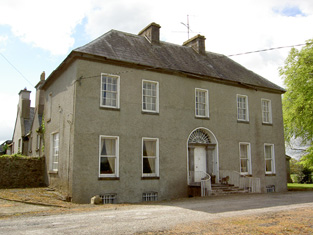
|
| Ballyphilip | The seat of the Going family in the 18th and 19th centuries, W. and A. Going were resident in 1814 and Ambrose Going held the property in fee at the time of Griffith's Valuation. The buildings were valued at £30.15 shillings. This house was held by the representatives of B.F. Going in 1906. Buildings are still extant at the site. | |
| Ballinunty House | William Going occupied this house and held it in fee in the mid 19th century when it was valued at £24.10 shillings. In 1894 Slater notes it as the seat of Miss A.J. Going. This house no longer exists. | |
| Coalbrook | A Langley home in the 18th and 19th centuries. The Ordnance Survey Name Books describe the demesne as "nearly one half wood and oranmental ground" in 1838. It was valued at £35.10 shillings in the mid 19th century when held by Henry Langley in fee. George Langley was the occupier in 1906 when the buildings were valued at £41+. This house is still extant and lived in. |
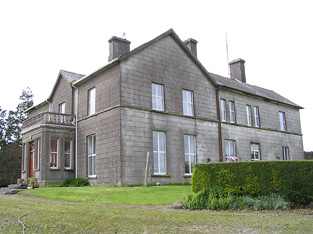
|
| Lisnamrock Castle | The Langleys were resident here from the 18th century. Wilson, writing in 1786, refers to Lisnarock as the seat of Mr Langley. Henry Langley was the occupier in the mid 19th century, holding the property in fee. The buildings were valued at £11.10 shillings. Held by George Langley in 1906. Buildings still exist at this location. | |
| Lickfinn | Fergus Langley occupied Lickfinn in 1814 and John Langley held the house valued at £12 and 273 acres in fee at the time of Griffith's Valuation. This house was later known as Knockanure. In 1906 held by the representatives of John Langley. | |
| Pastor Ville [Kockboy] | In 1840 the Ordnance Survey Name Books refer to Pastorville as a gentleman's seat and to Micheal Meeghan as the proprietor. At the time of Griffith's Valuation Timothy Meighan held a house at Knockboy valued at £10.15 shillings and 15 acres from Edmund Byrne. This appears to be the house Pastor Ville marked on the first Ordnance Survey map and on the later 25-inch map of the 1890s. Buildings are still located at this site. | |
| Poyntstown | A home of a branch of the Cooke family in the 18th century. In 1786 Wilson refers to "Point's-town" as the seat of William Cooke. He was also the proprietor in 1814. In 1837 Lewis records Poyntstown as the property of Phanuel Cooke "in ruins". The house is marked as in ruins on the first Ordnance Survey map. Fennell Cooke held this townland at the time of Griffith's Valuation. | |
| Helen Park | Oliver Latham was residing at Helen Park in 1814 and in the mid 19th century Reverend Martin Laffan, Parish Priest of Killenaule, was the occupant. He held the property from Patrick Waldron and the buildings were valued at £22.15 shillings. Helen Park is listed as one of the residences of Lawrence Waldron in the 1870s. Still extant and occupied. |
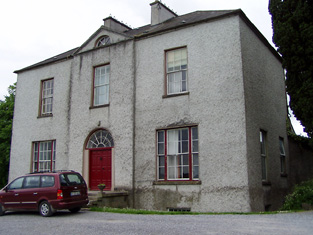
|
| Cleragh House | William Power was living at Cleragh, Killenaule in 1814 and Charles Blackmore was resident in the mid 19th century. Blackmore held the house valued at £13 from Patrick Waldron with 257 acres. This house is still in use as a country residence. |

|
| Glenview | Glenview was occupied by the Reverend Edmund Prendergast in the early 1850s. He held the house valued at £18.15 shillings from Matthew Prendergast. In the early 20th century the house was altered and extended by a religious order who set up a school. |
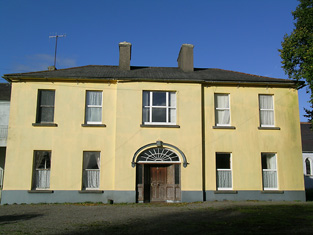
|
| Noan | Originally the home of the Taylor family, Wilson refers to Noan as the seat of Godrey Taylor in 1786. It was occupied by Natt. Taylor in 1814 and recorded by Lewis as the seat of the Taylor family. In 1840 the Ordnance Survey Name Books refer to Mary Phelps as the proprietor of Noan House. By the mid 19th century it was occupied by the representatives of John Bagwell and held in fee. The buildings were valued at almost £30. The sale rental of 1853 records James Chadwick as tenant on a seven year lease. A lithograph of the house is included. Occupied by Dr Armitage in the 1870s who owned over 2,000 acres in the county. It is still extant and occupied. |
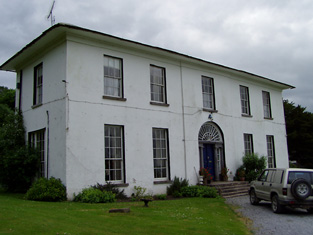
|
| Grangehill | Robert Mason held a house and office valued at £15.10 shillings at Grangehill from William P. Barker in the mid 19th century. Mason was Barker's agent. He also held offices and 101 acres in the neighbouring townland of Knockatooreen. | |
| Kilcooly Abbey | In 1786 Wilson refers to Kilcooley as the residence of Sir William Barker. This was the seat of the Barker and later Ponsonby Barker family in the 18th and 19th centuries. It remained in the possession of the family now known as Ponsonby until the early 21st century. The present house dates from the late 18th century, the family having previously lived in the old abbey. The house was partially destroyed by a fire in 1839 and rebuilt. In the mid 19th century the house was valued at £67.10 shillings. |

|
| George's Park | Located on the Barker estate this house may be named after George Ashby who lived in it in the mid 19th century. It has been extended since it appeared on the first Ordnance Survey map and was valued at £13.10 shillings at the time of Griffith's Valuation. It is still extant and occupied. |
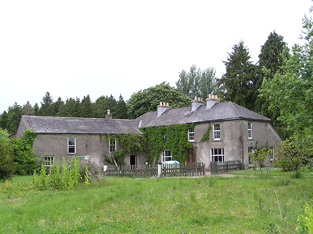
|
| Wilford | Wilford was the residence Butler Esq in the 1770s and 1780s and of Mr Richard Blackmore in 1814. In the early 1850s it was occupied by John Blackmore, who held the property valued at £11+ from William P. Barker with 128 acres. The house is labelled Wilford House on the 1st edition Ordnance Survey map but as Shangarry House on the 25-inch edition of the 1890s. It is now a ruin. | |
| Willmount | Occupied in 1814 by Robert Lane and by Hampden Lane in the early 1850s, when the house was valued at £17 and held from William P. Barker. This house is still an occupied residence. |
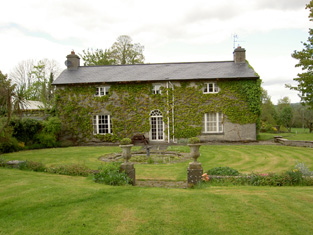
|
| Knockanglass | This house was the home of James Riall in the early 1850, who held the property from K.Pennefather. The buildings were valued at £18.15 shillings. The National Inventory of Architectural Heritage states that this house was associated with the Langley family and was sold to the O'Dwyers in 1912. It was occupied by Adelaide Langley in 1906. It still functions as a residence. |
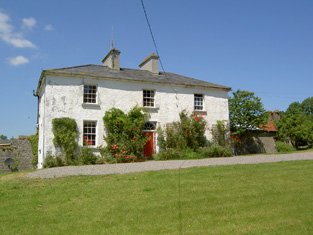
|
| Moglass House | Moglass valued at £11 was held by John Riall from George Riall at the time of Griffith's Valuation. It is described as "in ruins" on the 25-inch Ordnance Survey map of the 1890s. | |
| Lanespark | The home of the Lane family from the 18th century,Wilson refers to it as the seat of Hamilton Lane in 1786. Held by John Lane in 1814 and by his representatives in the early 1850s, when the house was valued at £26. The sale rental of 1858 describes the farm offices as extensive and that a powerful steam engine had been erected. Lanespark House is still extant. | |
| Roan | Dennis Duan was resident here in 1814 and Robert Purcell in 1814. He held the property valued at £18.15 shillings from Matthew Jacob. This house had later associations with the Bianconi family and is still a family home. |
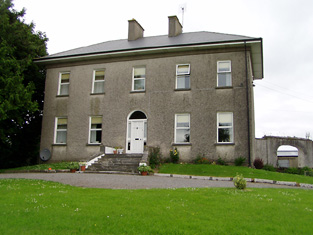
|
| Mohober | Mohober was occupied by Scott Esq in the 1770s and 1780s. It was the home of the Cormick family in the 19th century. Richard Cormick was resident in the early 1850s holding the property from the Earl of Clonmel. The buildings were valued at £14.15 shillings. In the 1870s Daniel Cormack of Mohober owned 189 acres in county Tipperary. The sale rental of the interest of James P. Welply in the house and demesne of Mohober dated July 1868 records that the property was conveyed to Daniel Welply by the Encumbered Estates Commissioners in May 1856. The original lease dated 1766 was from William Cane to Mark Scott. The Cormac interest in this property was advertised for sale in June 1876. Buildings are still extant at this site. | |
| Lismortagh | Matthew N. Sankey was residing at Lismortagh in 1814 and John Millett in 1850. Millet held the property from the representatives of William Burgess and the buildings were valued at £17.15 shillings. This 18th century house is still a fine residence. |

|
| Mortlestown Castle | Captain James G. Jacob was the occupant of Mortlestown Castle in 1814. By the time of Griffith's Valuation Thomas P. Lloyd was resident holding the property from Robert Jacob. The house was valued at £29. Buildings are still located at this site. | |
| Kyle | A house occupied by Matthew R. Millett at the time of Griffith's Valuation, valued at £10 and held from Colonel W. Palliser. | |
| Ballyrichard | The Ordnance Survey Name Books describe Ballyrichard as "a good farmer's hosue with offices and garden" in 1840. The house, valued at £12.18 shillings, was occupied by Matthew Hughes and held from Colonel W. Palliser at the time of Griffith's Valuation. Richard H. Hughes of Ballyrichard owned 597 acres in the 1870s. A substantial farm is still extant at the site. | |
| Langley Lodge | In 1840 the Ordnance Survey Name Books refer to Langley Lodge as "a good house with offices and garden". This house was occupied by Mrs Mary Langley in the early 1850s. She held it from Henry Langley and the buildings were valued at £19.19 shillings. By the time of the sale in December 1853 John Kane was resident. A building is still extant at this site. | |
| Grallagh Castle | In 1840 the Ordnance Survey Name Books refer to Mr. Hodgins as resident at Grallagh House. Southery Mansergh occupied the house,valued at £14+ in the mid 19th century. He held this property from O'Connor Hinchy. It is labelled Grallagh House on the 1st Edition Ordnance Survey map but as Grallagh Castle on the 25-inch map of the 1890s. It is no longer extant. | |
| St Johnstown | St Johnstown originally belonged to Matthew Jacob, whose only daughter and heir married Richard Pennefather of New Park in 1782. Wilson refers to it as the seat of Mr. Jacob in 1786 but their second son Matthew J. Pennefather was resident at St Johnstown in 1814. In 1837 Lewis records St Johnstown Castle as "consisting of a high square tower in good preservation, [it] is the property of James Millet Esq who has a modern house in its immediate vicinity". The buildings were valued at £31+ in the early 1850s, James Millet was still the occupier holding the property from Stephen C. Moore. | |
| St Kevinsfort | St Kevinsfort was occupied by William Massey [William Creagh Massy?] at the time of Griffith's Valuation. The buildings were valued at £15.17 shillings and held from Usher Beere. In 1840 the Ordnance Survey Name Books refer to the house as the property of Mr. Massy. |

|
| Heathview | This house is marked on the first edition Ordnance Survey map as Liskeveen House. Luke Bray was the proprietor of Liskeveen in 1814. A vacant house valued at £14.18 shillings was in the possession of Samuel M. Going at the time of Griffith's Valuation. A new house located slightly to the south of the original house was built circa mid 19th century. This is the house known as Heathview occupied by Samuel M. Going's daughter Margaret and her husband Owen Lloyd Mansergh in the late 19th century. | |
| Liskeveen [Fannyville] | Originally known as Fanny Ville and marked on the first Ordnance Survey map as such. The Ordnance Survey Name Books refer to it as the residence of Richard Beere in 1840. This house was extended sometime in the mid 19th century and was valued at £30+ when occupied by Samuel M. Going and held by him in fee at the time of Griffith's Valuation. It is still extant. |
![Photo of Liskeveen [Fannyville]](https://landedestates.ie/storage/img/orig/2015.jpg)
|
| Newhill | A property belonging to the Going family in the late 18th and 19th centuries. Newhill was the home of James Going in 1814 and of John Thomas Going, son of Samuel Murray Going, in the mid 19th century. The buildings were valued at £18.12 shillings at this time and held from Christopher Donville. Newhill passed to John Thomas Going's sister Mary Braddell who was resident in 1906. | |
| Riversdale | A house occupied by Patrick Hyland at the time of Griffith's Valuation, held from Usher Beere and valued at £15+. | |
| Parkstown | The Lamphiers were resident at Parkstown from at least the 1770s. In 1786 Wilson refers to Parkes-town as the seat of "Mr. Lanphier". Henry Langley lived at Parkstown in 1814 and John P. Lamphier was resident in 1837 and in the early 1850s. Lamphier held the property from the Court of Chancery and the buildings were valued at £23+. John P. Lanphier was the occupant at the time of sale in 1852. This building is still a fine residence. |
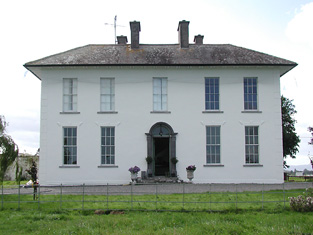
|
| Turtulla | A member of the Blunden family was living at "Turkla" close to Thurles in the 1770s. William Nicholson was living at Turtola in 1814. Lewis writes in 1837 that it was the property of Valentine Maher but that John B. O'Brien was resident. A flour mill was located on the property. In 1840 the Ordnance Survey Name Books record a Mr. Lister in charge of the mill. They refer to Valentine Maher as the proprietor. By the time of Griffith's Valuation Nicholas Maher was the occupier. He held the property from the Court of Chancery and the buildings were valued at £50+. Nicholas had succeeded his cousin Valentine in 1844 and died without heirs in 1871. Turtulla then became the home of the Barry family from county Limerick. It was unoccupied from 1927 to 1944 when it was purchased by the Thurles golf club and has been their club house since then. see http://www.thurlesgolfclub.com/cluboverview.html |
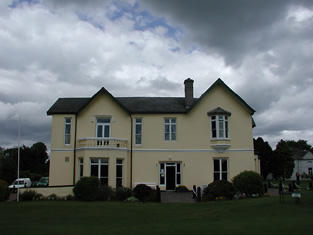
|
| Maxfort House | Maxfort was the home of John Max in 1814 and of William Max in 1837 and at the time of Griffith's Valuation. It was held from Viscount Hawarden and valued at £15.18 shillings. A house is still extant at the site. | |
| Laurel Lodge | In the mid 19th century Vernon Lamphiere occupied a house in the townland of Moycarky held from William Max and valued at £13.5 shillings. A house is still extant at the site. | |
| Killoran | Killoran was occupied by Thomas Lalor in 1814 and by Solomon Lalor Cambie in 1837. S.L. Cambie was still the occupier at the time of Griffith's Valuation holding the property from Richard Thompson. The buildings were valued at £17+. The house is still extant. |

|
| Cooleeny Lodge | A house has been located at this site since the first edition Ordnance Survey map of circa 1840. Robert Hunt occupied the house, valued at £11.18 shillings in the early 1850s and held from Henry Langley. A house is still extant at this location. | |
| Archerstown | The home of a branch of the Langley family, occupied at the time of Griffith's Valuation by Henry Langley and held from the Reverend Robert Lockwood. The buildings were valued at £25+. The Langley family continued to live here until the 1970s. |

|
| Rathmanna | Thomas Ryan of Rathmanna died in 1835 and is buried in the graveyard of St Mary's Church, Thurles. Rathmanna house was occupied by Thomas Ryan in the mid 19th century and held from Messrs Waller and Doherty on a lease dated 1791 James Doherty to Thomas Ryan. It was valued at £22.17 shillings. In 1865 it was advertised for sale with about 340 acres belonging to Thomas Ryan. Rathmanna a substanial and spacious house was in the possession of Michael Cahill in 1873. A building is still located at this site. | |
| Ballyduff | Ballyduff was the residence of Hunte Esq in the 1770s. In 1814 J. Minchin occupied Ballyduff, Thurles. In the mid 19th century Benjamin White of Ballyduff held the house valued at £11 and 48 acres from John Hunt. The Hunts and Whites were related. Ballyduff , the estate of John Hunt, was advertised for sale in December 1859 and again in November 1860. The house marked on the 25'' OS map is not on the same site as the original house marked on the first edition OS map. Henry O'Neill of Shanballyduff, Thurles, held 155 acres in the 1870s. The will of Henry O'Neill of Annesbrook, county Dublin and Ballyduff, county Tipperary dated 2 Oct 1891 is in the National Archives (T.12,231). Some of his descendants live in Argentina, see http://www.irishgenealogy.com.ar/genealogia/N/ONeill/henry.htm | |
| Littleton Lodge | Littleton Lodge was the residence of Thomas Ellard in 1814. In 1840 the Ordnance Survey Name Books record it as "the name of a castle, the residence of a gentleman". Charles Wilkinson as the occupier then and in the early 1850s. Wilkinson held the house valued at £17.12 shillings from Mrs Ellard. This house is still a family home. |

|
| Ballydavid | The residence of Marcus C. Russell in 1814 and of John Russell at the time of Griffith's Valuation, when it was valued at £26.15 shillings and held from Edward H. Byrne. The sale rental of 1854 includes a lithograph of this house. It was bought by Richard Power and his descendants continued to live in the house until 1950. The house was demolished in 1963. | |
| Slievardagh | In 1906 John H. Lanphier held buildings valued at £18+ in the townland of Blackcommon part of the village of Commons, probably Slievardagh House. This house is not marked on the first edition Ordnance Survey map. |
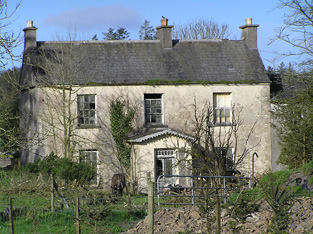
|
| Springhill | Occupied by Dr Samuel Hemphill and held by Samuel Hemphill Esq in fee at the time of Griffith's Valuation when the house was valued at £5.15 shillings. |

|
| Cloonyhea | A house valued at £11+ was occupied by Thomas Mansfield at Cloonyhea in the mid 19th century. It was held from John Bradshaw. A small house is marked on the first edition Ordnance Survey map at this location. It had increased considerably in size on later maps, still extant. | |
| Ballymurreen | In 1786 Wilson refers to "Ballymoreen, with the ruins of castle and church" as the seat of Mr. Baker. This townland was described as "in chancery" at the time of Griffith's Valuation. | |
| Shanbally House (Moycarkey) | In 1786 Wilson refers to Shanbally as the seat of Colonel Slaughter. In1840 the Ordnance Survey Name Books note that "Shanbally Old Castle" was the name given to a house in the parish of Moycarkey. By the time of Griffith's Valuation the townland is part of the estate of Miss Emma Stannix. A house is still extant at this site, now part of a large farm. | |
| Coolquill Castle | In 1786 Wilson refers to Coolquill as the seat of Mr. Gahan. The property is labelled "Coolquill Castle" on the 1st edition Ordnance Survey map and indicates that it was built on to a tower house. Coolquill was held in fee by Colonel Palliser in the mid 19th century. He was married to Anne Glenstanes. The castle was valued at £5. The castle ruin and other buildings are still extant at the site. | |
| Venter Fair | The Ordnance Survey Name Books refer to this house in the townland of Clashduff, parish of Ballingarry as "Venture Fair" and note the existence there of coal mines of the same name. At the time of Griffith's Valuation, it was leased by Mrs. Mary O'Sullivan from the Langley estate and valued at almost £10. A house is still extant at the site. |

